Standing out against the linear grid of city streets and pedestrian crossing stripes, over 170 strange brick circles can be found embedded in the pavement throughout San Francisco. At their center: a metal circle that looks a lot like a manhole cover for sewer access.
In fact, these brick outlines are a surface expression of something much larger below: a series of huge cisterns (holding tanks) that form an integral part of the city’s Auxiliary Water Supply System.

The fire department’s AWSS is comprised of water reservoirs, pump stations, suction connections, fireboats and cisterns, all designed to help deal with emergencies should conventional water systems fail.
Following the infamous 1906 earthquake, fires erupted across San Francisco. In many places, the flames wreaked havoc for days. An estimated 3,000 people were killed and over 80% of the city was destroyed. The devastation was made worse by the failure of emergency water systems in the wake of the quake. Among other issues, water mains broke and firefighters found it hard bring vehicles with water across the city’s rubble-filled streets to areas in need. In the aftermath, the AWSS (and its cistern system) was developed to put redundancies in place and prevent similar failures in the future.
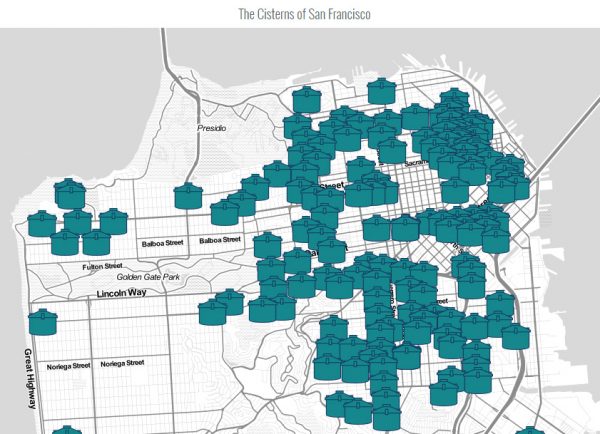
The cisterns range in capacity from 75,000 to over 200,000 gallons each, able to store a total of over 11,000,000 gallons citywide. They are made of concrete and steel rebar for strength and durability, designed to resist damage in case of earthquakes.
Their positions across the city make it possible for firefighters to access local water sources should pipes break or roads become impassible. Usually, their presence is indicated by a circle of bricks (or in some cases: a square). Up close, the access covers can be readily identified, labeled with CISTERN and S.F.F.D (San Francisco Fire Department).
In case of fire, trucks can pull up right up and suck water directly from the cistern to battle the flames.
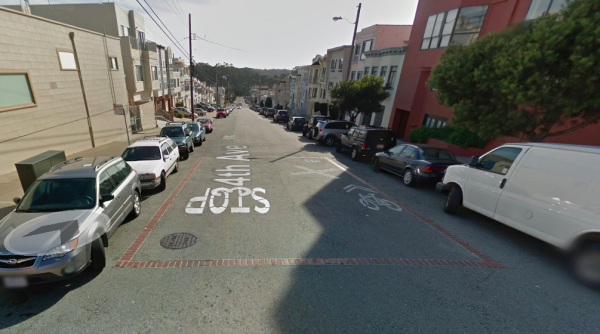
The AWSS has other clever systems in place, too, that hide in plain sight. For instance: there are sets of blue-, red- and black-topped hydrants that tap into three different reservoirs (Jones Street, Ashbury Street and Twin Peaks, respectively). If one of these sources gets tapped out the others can be brought into play.
And if all else fails: brackish water can be pumped from the San Francisco Bay itself to meet demand — each of two pumping stations can push 10,000 gallons per minute as needed. These, in turn, are backed up by a pair of fireboats that can likewise supply salty water.
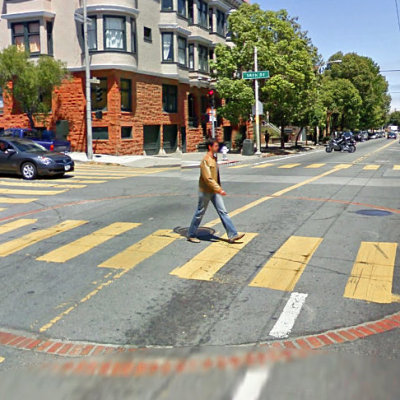
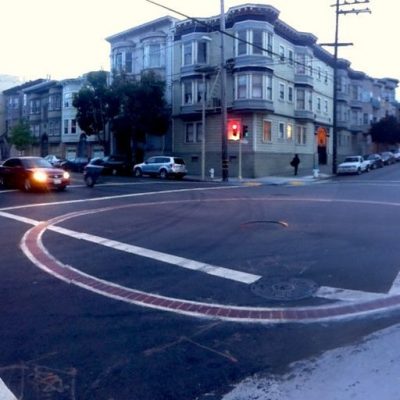
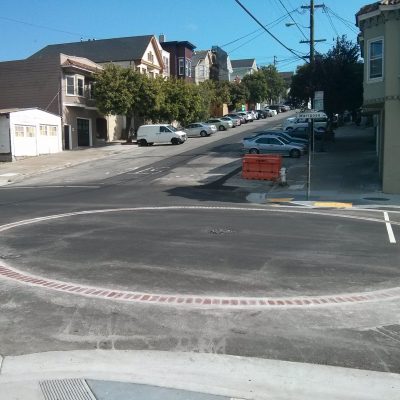
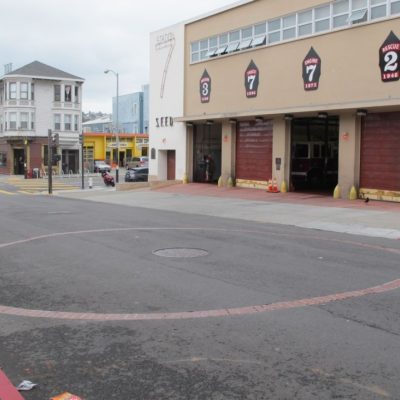



Comments (5)
Share
But why are the brick outlines there on the surface? Are the cistern covers not enough to find them in time of need?
Good question! From what I can gather, the bricks serve two purposes: (1) faster identification in a crisis, (2) avoidance of accidental damage/destruction (e.g. for underground utilities/infrastructure work).
So, are the water cisterns kept filled at all times? Wouldn’t that much standing water go bad or something if so? I mean, it certainly doesn’t need to be potable or anything, but yeah. Is it kept filled year-round, or just filled rapidly on emergencies?
This is a great article I lived in SF for years and never knew anything about this. I’m also a plumbing / mechanical engineer for buildings so I’ll send this to other people in my department.
The text should read “(Jones Street, Ashbury Street and Twin Peaks, respectively)”. If you look at the chart shown at 3:57, blue hydrants come from Jones Street, and black from Twin Peaks.